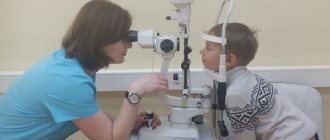Why is hypervitaminosis D dangerous?
At the beginning of this century, an American endocrinologist specializing in vitamin D, Michael F. Holick and co-authors showed that the main problem of the 21st century is a pandemic of vitamin D deficiency. And for its prevention and treatment, the “loading dose method”, the “vitamin push method” was recommended. The scientist prescribed “dense courses” of vitamin D to patients – from 300 to 60,000 IU or more per day for 1–12 months! As an alternative, short-term treatment with higher doses was allowed - 600,000 IU per day. Holick MF noted that daily doses of vitamin D up to 10,000 IU are safe and cannot cause hypervitaminosis.
“We do not agree with this point of view,” says Professor V.I. Strukov. – In excessive doses, vitamin D has a direct toxic effect on intracellular processes in various organs and tissues - liver, kidneys, heart, blood vessels and others. It can cause increased calcium levels in the blood, increased excretion of calcium in the urine (9–17 times higher than in healthy individuals), and calcification of soft tissues.
Russian scientists examined patients who had been taking vitamin D and calcium for a long time to treat osteoporosis. A significant proportion showed hypermineralization of bones and soft tissues, including blood vessels. But it has already been proven that this increases the risk of heart complications by 20%! This process can also cause the formation of kidney stones, the development of prostate cancer, the proliferation of pathogenic microflora and frequent infectious diseases.
An important fact is that the symptoms of hypervitaminosis D may not manifest themselves for a long time! At the same time, changes at the cellular level are already underway. Vitamin D accumulates in cell membranes, disrupting their structure and function. Ultimately, the cells die, and their place is taken by tough connective tissue. It is not able to perform the work of dead cells.
Hypervitaminosis - symptoms, forms and treatment
Hypervitaminosis C
Vitamin C (ascorbic acid) is an antiscorbutic (antiscorbutic) and antioxidant vitamin that is not synthesized in the body and must be replenished daily.
The consequences of hypovitaminosis and hypervitaminosis C are significantly different due to the fact that even a slight deficiency of ascorbic acid leads to severe symptoms, and an excess of the vitamin does not always appear and often only with chronic overuse. Ascorbic acid hypervitaminosis occurs with constant consumption of vitamin C in excess of 100 mg per day. The optimal daily dose of the vitamin is on average 80 mg/day. Severe symptoms occur with hypervitaminosis in children (leading to diabetes mellitus). Hypervitaminosis B1
Vitamin B1, or thiamine, is an antineuritis vitamin that is easily excreted from the body in urine if it is in excess. Hypervitaminosis of vitamin B1 is extremely rare and is practically not described in the medical literature. Only a few foreign authors describe hypervitaminosis B1 in connection with increased sensitivity in people to whom thiamine was administered parenterally (intravenously). Excess thiamine leads to inhibition of cholinesterase and also damages mast cells, leading to the development of allergic reactions. Also, an increased content of thiamine in the body leads to disruption of the hematopoietic system. The daily requirement for vitamin B1 is 1-1.6 mg, and the largest amount is found in yeast, wheat bread, beans and soybeans. It should be remembered that excessive consumption of yeast can lead to gouty arthritis, so they are not used as a source for hypovitaminosis.
Hypervitaminosis B2
Vitamin B2 (also called growth vitamin, or riboflavin) is an important biological substance, acute deficiency of which can be fatal. Hypervitaminosis B2 is also not found in the literature, which is explained by its rapid elimination from the body by urine (riboflavin does not accumulate in tissues in excess). The daily dose is 2-4 mg, and the vitamin is contained in cottage cheese, animal liver (chicken, pork) and milk.
Hypervitaminosis B3
Vitamin B3, better known as pantothenic acid, is an important component in maintaining intestinal microflora. What is characteristic is that hypervitaminosis of pantothenic acid does not occur, and even in seemingly toxic doses no manifestations occur. No more than 20 mg is needed per day, which a person receives along with plant and animal foods.
Hypervitaminosis B6
Vitamin B6 (or pyridoxine, adermin) is a so-called antidermatitis vitamin, which is produced in sufficient quantities by the microflora of the large intestine. The normal daily dose is considered to be about 5 mg, although in athletes and pregnant women, as well as people with excessive protein in their diet, the daily requirement may increase. Hypervitaminosis B6 develops in case of long-term use of high doses of pyridoxine (over 300 mg). It is found in yeast, legumes, cereal grains and bread.
Hypervitaminosis B7
Vitamin B7 (vitamin H), or biotin, is an important component of carbohydrate metabolism, starting the processes of breakdown and utilization of glucose. Hypervitaminosis occurs only in the case of individual characteristics of the body, when there is increased sensitivity to biotin, since even ultra-high doses (over 30 mcg/day with a norm of 25 mcg/day) of biotin do not cause any side effects.
Hypervitaminosis B8
Vitamin B8, the so-called inositol, found in all foods (meat, vegetables, dairy products). Hypervitaminosis B8 occurs when its daily requirement exceeds 10-15 g (with the norm being up to 2 grams) and is manifested by allergic reactions only in case of individual intolerance (an extremely rare pathology). Otherwise, inositol is not toxic to the body in healthy people.
Hypervitaminosis B9
What does the term "vitamin D" mean?
When it comes to vitamin D, we do not mean one individual vitamin, but a combination of biologically active substances in the forms D3 (cholecalciferol) and D2 (ergocalciferol).
Markers of vitamin D levels in the human body are:
- 25-hydroxycalciferol – is widely used specifically for diagnosing D-deficiency and monitoring treatment;
- 1,25-dihydroxycholecalciferol - used selectively for certain pathological conditions (chronic kidney disease, hereditary kidney pathology with phosphate loss).
Vitamin D regulates immune responses and affects hair growth, and its deficiency is associated with rickets, a tendency to depression, muscle weakness and even polycystic ovary syndrome. However, excess is no less dangerous. In this regard, it is important to monitor the level of vitamin D in the blood and timely diagnosis of its deficiency or excess.
The Vitamin D (25-hydroxycalciferol) study from DILA measures 25(OH)D-hydroxycalciferol levels and is considered the best indicator of vitamin D in the body. In DILA, the method for determining 25-hydroxycalciferol is biotin-independent and complies with the standards of international protocols. Accurate, reliable determination of the level of D-hydroxycalciferol in DILA is the key to achieving the recommended level of vitamin D, preventing insufficiency of the drug or exceeding the dose and intoxication with vitamin preparations.
The study is carried out to diagnose a lack or excess of vitamin in the body, identify the causes of calcium metabolism disorders and bone diseases, as well as to monitor the effectiveness of treatment with vitamin D preparations and dosage adjustments.
Types of vitamin D - D2 and D3
D3 (cholecalciferol) is called “solar” because it is formed in the skin due to exposure to ultraviolet radiation. To do this, children and adults should spend about 15–30 minutes in the sun several times a week. However, intensive production of vitamin D occurs during hours that are harmful to health - from 11:00 to 14:00, when the skin needs protection.
In addition, the natural absorption of the vitamin decreases over time, and people with dark skin absorb it more slowly. Negative factors for the perception of beneficial sunlight are sunscreens and unfavorable ecology, such as air pollution. Therefore, even in the summer months, not always and not everyone can stock up on cholecalciferol.
D2 (ergocalciferol) enters the body along with the usual food. However, not many foods of animal origin are known to be enriched with vitamin D: fatty fish (herring, sardines, salmon, mackerel, tuna, halibut), lamb, eggs (yolk), butter, cream, sour cream, hard cheese, beef liver , seafood, cod liver, red caviar, fish oil. The vitamin is present in limited quantities in plant foods: chanterelle mushrooms, oatmeal, potatoes, oranges, parsley, broccoli, nuts, vegetable oils.
It is important to follow the cooking rules so that the beneficial vitamin is not destroyed. It has also been proven that food cannot provide the body with a sufficient dose of D2, since this requires eating too many foods rich in it, some of which also contain cholesterol. In addition, this list contains things that are advised to be consumed with caution or are not allowed at all for pregnant women and in the first 6 months of lactation.
What factors cause decreased vitamin D levels?
- 80-100% of vitamin D requirements are provided by synthesis in the skin under the influence of ultraviolet radiation. Thus, if a person’s exposure to the sun is insufficient, even a varied and balanced diet does not cover the full requirement for vitamin D. Therefore, taking medications plays a decisive role in maintaining calciferol levels.
- Up to 20% of the required amount of vitamin is provided through food consumption. It is found in foods of animal origin (fish, egg yolk, cheese, milk), where the dominant form of vitamin D is cholecalciferol (vitamin D3), as well as in foods of plant origin and mushrooms - ergocalciferol (vitamin D2).
Vitamin D deficiency is a major global health problem, affecting approximately one billion people. The deficiency may be due to both insufficient sunlight, lack of calciferols in food, and accelerated breakdown of the vitamin due to taking certain medications or due to certain gastrointestinal disorders. Vitamin deficiency conditions can occur at any age, including in infants*.
* In Ukraine, vitamin D deficiency was found in 82% of the population, deficiency in 14%, and normal levels in only 4%.
How does an increase in substance manifest itself?
When receiving all the necessary elements, the woman’s body is provided with a complete strengthening of the immune system. The right amount of vitamin D helps maintain a high level of immunity, prevents the development of cancer, and reduces the risk of osteoporosis. Symptoms in women may differ in how an excess of vitamin D manifests itself.
According to the calculations of competent specialists, it is necessary to maintain vitamin D in the female body at a level of 40-80 ng/ml. If the norm is exceeded and goes beyond 100 nmol/l, this is considered a great harm to health. The following conditions may indicate a problem:
- Weakness.
- Forgetfulness.
- Vomiting and nausea.
- Unreasonable fatigue.
- Speech may become slurred, etc.
Calciferol helps the proper absorption of calcium, which a woman receives from the foods she eats. If excess vitamin D occurs, symptoms in adult women clearly indicate this, calcium levels also begin to increase. This causes a feeling of discomfort, the body’s functioning is disrupted, the symptoms can be quite dangerous - this can be a serious problem with the functioning of the gastrointestinal tract, severe thirst, dizziness and pain.
Correction of vitamins in the body
By taking vitamin D in sufficient quantities, you can protect yourself from various diseases and, in addition to feeling great, enjoy longevity. Its absorption by the female body also depends on physical activity - even simple fitness classes or walking have a noticeable effect on the process.
For an adult woman, the maximum dose of vitamin D is 4000 IU per day. The same - for pregnant and lactating women. The doctor may note symptoms of vitamin D overdose in adult women during the examination - treatment will be prescribed for this. By taking vitamin complexes, it is possible to form a valuable reserve in the female body that will help it function well.
What about babies?
Overdose of any drug occurs much faster in infants than in older children. After all, children in the first year of life do not yet have much adipose tissue where all the excess can be deposited, and therefore the substance accumulates in large quantities in the blood.
Babies with signs of hypervitaminosis usually sleep poorly, cry at night, lose appetite, and suddenly lose weight. Frequent regurgitation, diarrhea, and vomiting may occur. If alarming symptoms appear, parents should definitely show their child to a doctor.
Key points:
- Vitamin D toxicity is rare, but clinicians should be aware of complications associated with hypercalcemia
- Calcium levels may even increase before clinical improvement and after stopping vitamin D supplementation, since this vitamin is fat soluble
- Observational studies and expert opinion suggest that glucocorticoids, ketoconazole, and hydroxychloroquine may be used to treat hypercalcemia associated with vitamin D toxicity by reducing 1,25 OH-D3 levels.
Source
: Bourne L. Auguste, Carmen Avila-Casado, Joanne M. Bargman. CMAJ April 08, 2021 191 (14) E390-E394.
Why is vitamin D important for the human body?
Vitamin D:
- Regulates calcium-phosphorus metabolism, and thus plays a significant role in the functioning of tissues and organs rich in these minerals, that is, the skeletal system and teeth. Lack of vitamin D in children leads to bone deformation, impaired mineralization and decreased bone mass (rickets). In adults and adolescents, vitamin D deficiency can cause osteomalacia and osteoporosis. In all age groups, severe vitamin D deficiency is associated with bone pain and bone fractures. Advanced stages of nutritional rickets and osteomalacia can be life-threatening conditions, characterized (due to low calcium levels) by seizures, severe bone pain and muscle weakness, damage to the heart muscle, and impaired mental and physical development.
Vitamin D:
- takes part in the implementation of the effects of sex hormones;
- participates in the regulation of several hundred genes in the human genome;
- has a strong immunomodulatory effect;
- takes part in the regulation of blood pressure;
- Vitamin D deficiency reduces insulin secretion;
Thus, a decrease in vitamin D levels leads to disruption of the functioning of many organs and systems.










